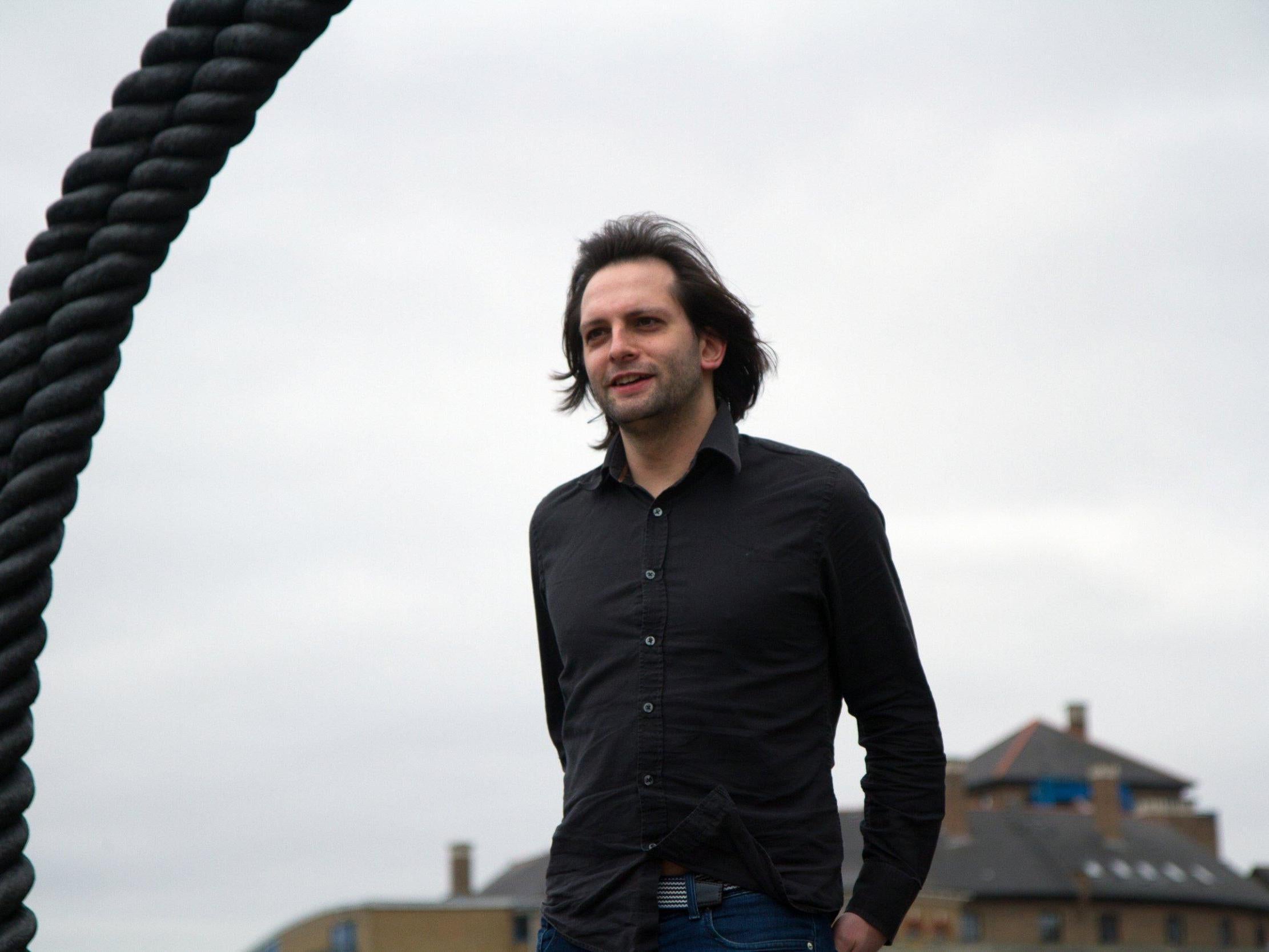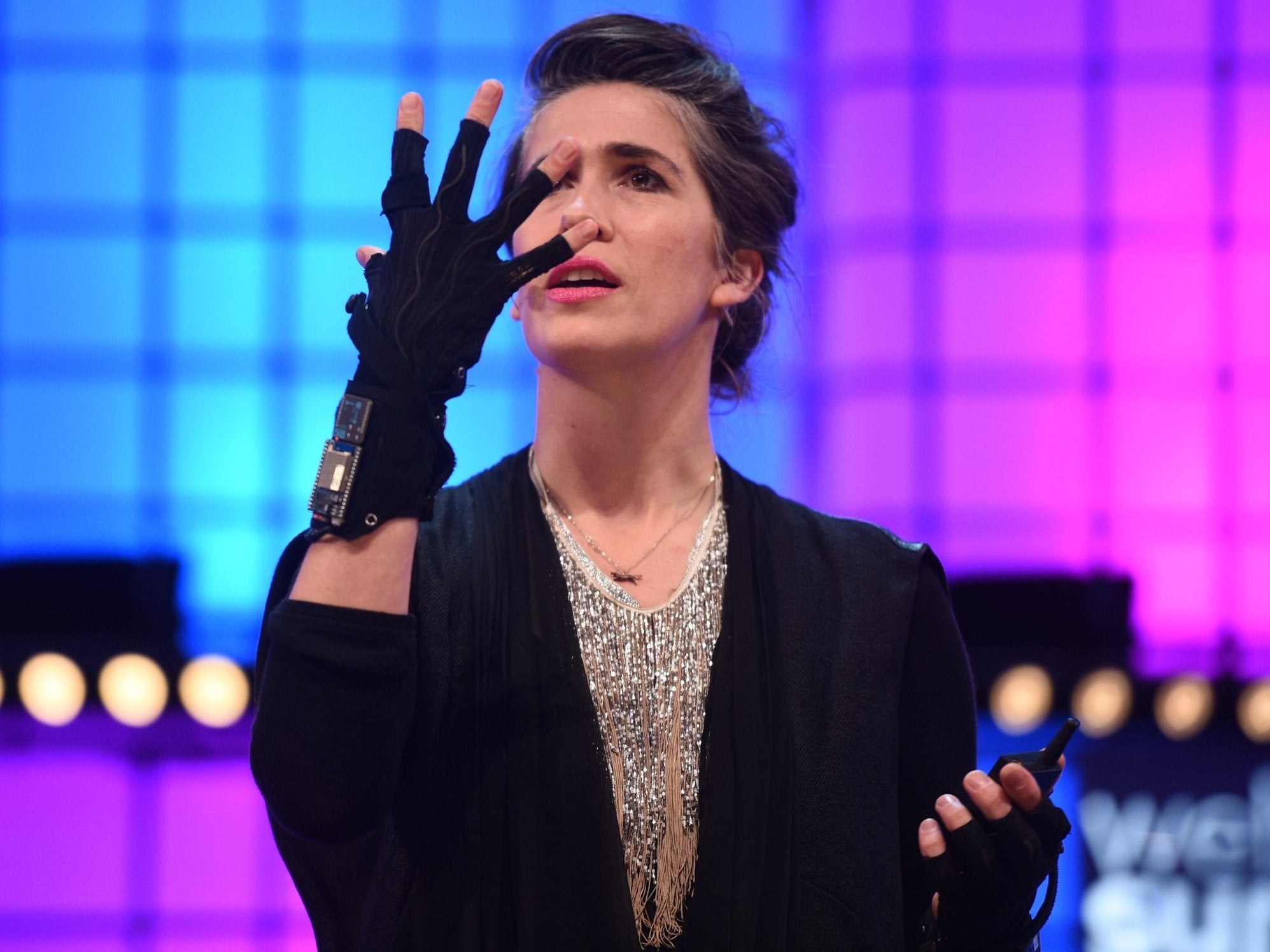A View from the Top with Adam Stark, MI.MU managing director
After years of research and a little help from some of the biggest names in pop, innovators have produced the most musically sensitive glove on the planet. Andy Martin meets one of the brains behind the project


As a schoolboy, Adam Stark was torn between being a musician and a computer scientist. So while he was supposed to be studying IT at Queen Mary University of London, he was mainly moonlighting on bass guitar and keyboards in a band called Munro Fox. But he also did a bit of producing and engineering on the side. By the time he graduated and embarked on a PhD, there had been a convergence between his academic work and his “first love”. The subject of his dissertation was Musicians and Machines: Bridging the Semantic Gap in Live Performance.
“It made perfect sense,” he says when we meet in the cafe at the British Library in London. “I had been studying the mathematical relation of the harmonic series. The problem was how to make machines more sensitive.” Stark is 36 now, managing director of MI.MU (pronounced Me-Mew), and has come up with the most musically sensitive glove in the history of the world.
Music is now, inescapably, music tech. Computers are an integral part of music production. “But,” says Stark, “they are still stupid: they don’t understand changes in tempo.” His dream is to get a computer tapping its foot in time to the music. “Why can’t I play a G chord and the computer chimes in with me?” The idea of “machine musicianship” is not to turn musicians into clunky robots but to free them up and allow them to play with more soul and spontaneity.
The MI.MU glove may be the closest we have yet come to synchronising musician and machine. “I love going to gigs,” says Stark. “But when you see live performances of electronic music, it often looks as if they’re sending their emails.” A guy behind a box pressing buttons or twiddling knobs is never going to be as visceral or exciting as a drummer or a guitarist. The glove enables you to become a one-hand band. “It gives the electronic performer the same expressive power that acoustic musicians have.”
We’ve always used our hands to communicate. With the advent of the glove, body language is now body music. But (a word of warning) you have to be a decent musician to start with. It’s not going to magically turn a clumsy wannabe into a virtuoso overnight.
After he left Queen Mary, Stark set up a small company teaching musicians how to program. Then he saw a tweet from Imogen Heap seeking technical expertise for a project she had been working on. She wanted to do a live performance in her garden using a glove. “She needed something serious and professional, not a toy.” The seed had been planted by an opera singer who had used a glove, engineered at the Massachusetts Institute of Technology Media Lab, to produce more vibrato. Gloves had also been used to control machinery. “But we had to start again from scratch,” says Stark. “They weren’t up to spec.”
Stark pays tribute to all the people involved in the project. As well as musicians and techies (including Tom Mitchell of the University of the West of England in Bristol), they needed a textile specialist (Hannah Wilson) to make the gloves work and a designer (Rachel Freire) to bring style and flair and make them look and feel good. The summer of 2012 saw Imogen Heap performing a song, with the gloves, in a geodesic dome powered by the pedalling of massed cyclists in her back garden in Essex.

But that was just the start. They had made something wonderful: an item of clothing that controlled music; wearable tech, but fitted, bespoke, to just one individual artist. It was hugely over-designed and expensive. The point was to make one that worked potentially for anyone. That’s when MI.MU was born with a mission to “enable people to express themselves through tech”. The name means Me-Music, ie you are personalising the music you play, shaping it – with the movements of your own body – to give form to your mood and thoughts and personality.
At the beginning, you needed a backpack, loaded with technical kit, wired to the gloves, and a team of people standing in the wings to make it work. Now, after years of research and development, the glove really is just a very streamlined, sinuous-looking glove, connected to a computer via bluetooth. Numerous artists, including Ariana Grande on her 2015 world tour, have road-tested them. And now they’re available to pre-order online direct from MI.MU at £2,500 per pair (you can buy one at half the price).
But what impressed me was Stark’s ability to drum up funding to keep the whole show on the road for years before the product could go on sale. Individual musicians who believed in the concept chipped in thousands of pounds. But Stark was also able to win a number of grants, from Innovate UK (funded by the government) and an EU source, Horizon 2020. The company still had to finesse the sensors that were capable of recognising postures and measuring the bend of a finger or the orientation of a wrist. Are you clenching your fist? Pinching your fingers? The glove needs to know.
Wearing these gloves is cool in a way that holding a white stick is not
Stark acknowledges that Microsoft has technology that can recognise body movement. But it’s limited. “You can track but not control. And you want control. You might want to stop reverb, for example. The ability to select different parts of sound and sculpt them is what set us apart.” And he adds, “Wearing these gloves is cool in a way that holding a white stick [the Wii controller] is not.”
The gloves are made of 60 per cent recycled fabric. MI.MU uses Carvico vita, a high performance sports fabric, and Yulex, a sustainable, plant-based alternative to neoprene. And they are produced in Leicester by Sew Systems, who helped them develop fabric bonding in place of stitching.
The glove can be used by dancers and actors as well as musicians: “They’ve got the movement, now we can do the sound.” But Stark reckons that “gesture-based” tech has other potential uses. He foresees MI.MU-gloved surgeons carrying out remote operations in far-flung parts of the world via Skype. Meanwhile, he is still heading up a long-running musical project called Rumour Cubes and there is talk of his old band, Munro Fox, reforming. At least they won’t need a huge vehicle to lug all their kit around. All they have to do is snap their fingers.
Join our commenting forum
Join thought-provoking conversations, follow other Independent readers and see their replies
Comments